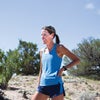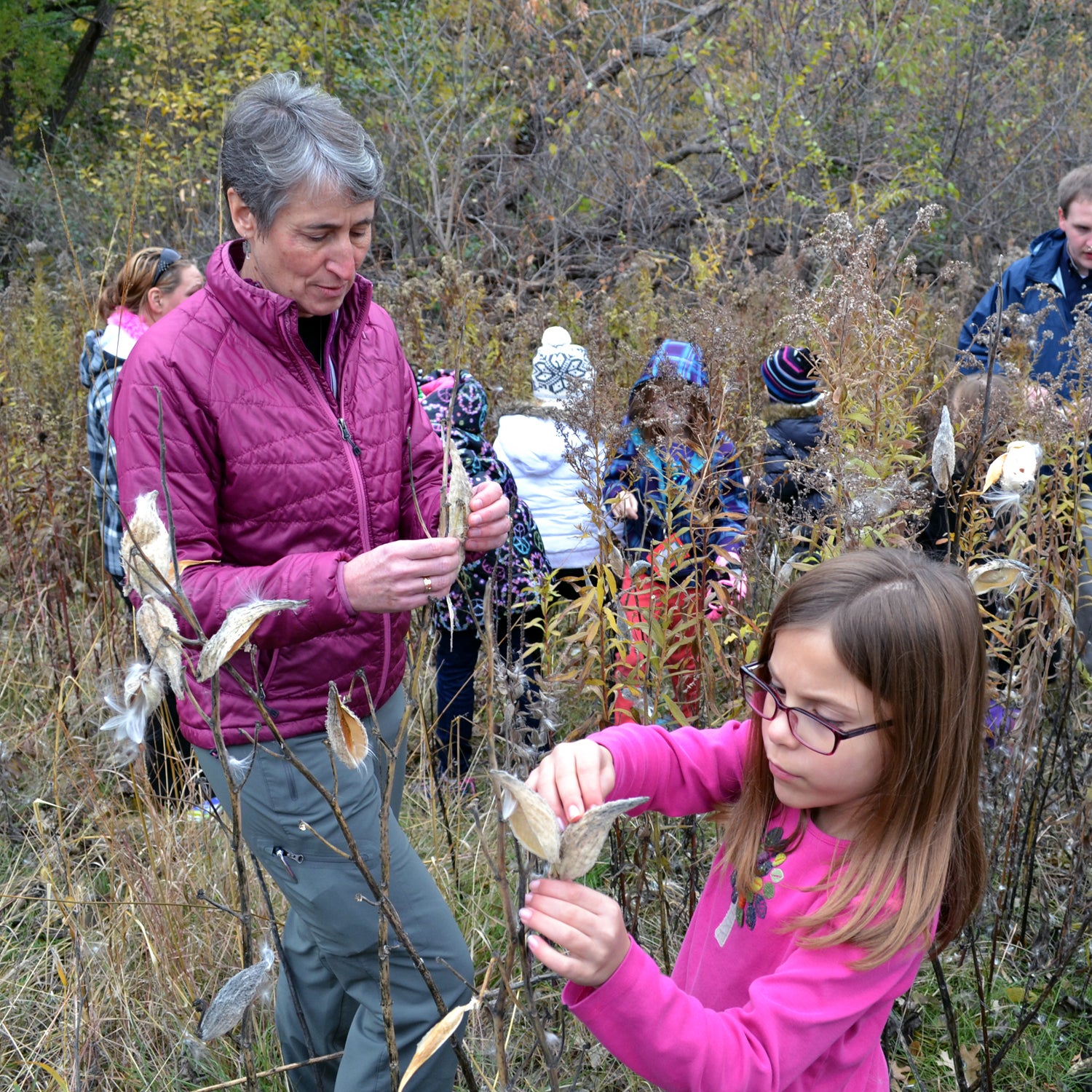As a kid, Sally Jewell spent a lot of time outside. Her parents took her to her first national park when she was four years old, and by age 15, she’d scaled Mount St. Helen’s with a group of friends.
That same year, in 1971, Jewell attempted Mount Rainier with the climbing club at her self-described “blue-collar high school.” But the young climbers were turned back in a whiteout and had to descend the peak by compass. “You learn a lot about yourself in those kinds of situations,” Jewell says. A year later, the club went back and summited—without a single adult in attendance. “We had a blast,” she says.
But the current Secretary of the Interior, now 60, isn’t as interested in recounting her childhood adventures as she is in trying to ensure that all American kids have the same opportunity to get outdoors that she had. Her latest initiative seeks to help young people from disadvantaged backgrounds experience the wilderness. Her new Secretarial Order, announced on March 4, aims to do just that, by making it easier, faster, and less costly for youth organizations to obtain permits to explore public wild lands on overnight or multi-day trips.
“There are many barriers to connecting with nature that even children of means have. If you’re a child without means, those barriers are even greater.”
Jewell has issued similar orders, like —the year after President Obama appointed her to the post—that sought to expand recreational, education, volunteer, and career opportunities for kids and veterans on public lands by encouraging the DOI to work with business and nonprofits. The new order goes a step further by targeting a very specific demographic. All participants must be under 26 years old, and 70 percent of the group must meet one or more of the following criteria: live in foster homes, have limited English proficiency, have run away from home or are homeless, live with disabilities, are at risk of dropping out, or are former juvenile delinquents or at risk of delinquency.
Visitorship in national parks hit a record high in 2015, with more than 307 million people, but underprivileged and minority youth—and kids in general—are still grossly underrepresented. According to the in 2008-09, 78 percent of park visitors were non-Hispanic white, a figure that had changed little since its last major survey, in 2000. As part of his push to diversify public lands and help grow the nation’s next generation of environmental stewards, President Obama passed his last September, granting free admission to every fourth-grader—and his or her family—to every national park and public land in the country. (Download your child’s free pass .)
While Jewell has witnessed the profound, life-changing effects of nature many times in her long tenure in the outdoors (she served as COO and CEO of REI for 13 years before taking the helm at the Interior Department), a recent trip to Crater Lake National Park, in Oregon, reminded her why it’s so important to reach out to under-resourced kids. When she learned that a group from the Youth Conservation Corps was in the area on a four-to-six-week service project building trails was in the area, she invited them to a press conference to launch National Park Week.
“They had already been in the backcountry two weeks. I guarantee they will be changed by that,” says Jewell, adding that the corps kids asked poignant questions about public lands during the event. “It is because they understood the healing power of nature, the change that comes over you when you are in a natural setting. You go from feeling worthless to feeling like you can add value.”
On Tuesday I spoke with Secretary Jewell by phone to learn more about how the initiative will work, why it’s so important to get underprivileged kids outdoors, and how we can all help.
OUTSIDE: What inspired you to create this order now?
JEWELL: Doug Walker and I both joined the board of directors of REI in 1996. At the time, REI was trying to work hard to engage new generations, and the outdoors was under-recognized by communities of color. Doug [who was then the chair of the Wilderness Society] and I recognized the importance of connection with nature for young people and how that can be life-changing. We’d been working on that for more than a decade.
Doug died on New Year’s Eve. I was at home in Seattle with my family. I felt like I’d been hit by a ton of bricks. Doug was a man of action and this had been his real single focus in the outdoors for a long time. I went to the public land managers and asked, “What are the barriers that exist to bringing more underprivileged kids outside in our public lands?”
What are the biggest barriers?
Commercial guiding companies compete for concession contracts to take people outside [on popular trips, such as rafting the Grand Canyon] and don’t want to have more competition from nonprofits. The other factor is that…when you’re trying to plan a trip, you can come across inconsistencies in the permitting process. We don’t want to be the barrier [keeping nonprofits from obtaining those permits and contracts]. The barrier will be the capacity of nonprofits to raise money, and to get beyond the fear factor of the unknown. There are many barriers to connecting with nature that even children of means have. If you’re a child without means, those barriers are even greater.
So permitting is the main focus?
We’re trying to work with land managers [at the different agencies—National Park Service, Fish & Wildlife, BLM, and Bureau of Reclamation] to steer groups away from areas that are highly popular. We have amazing places throughout the West in particular that aren’t oversubscribed. In some places where the resources are limited, like the Colorado River through the Grand Canyon, commercial guiding companies may have had permits for decades. No one else has been allowed in. The order is not prescriptive. It’s a process. Land managers will work to facilitate visits from youth groups and waive the fees and provide them with permits.
Let me give an example: the Girl Scouts is largely a volunteer organization. But there was a troop in Washington State that was leading a trip for girls whose mothers were incarcerated. The staff members on the trip were paid by the local Girl Scouts Council. If they were to come to a federal land management agency to ask for a permit for a camping trip, they would need a commercial permit. But if it was a private group, led by parent volunteers, they would not need a permit. It’s a catch-22 for the organization serving people who need it most.
How much will this initiative cost this year and going forward?
It’s not material. What we’re talking about is facilitating permits or waiving fees. The fees are relatively minor.
How many kids do you hope to reach?
I don’t have a number goal for this the way I have other numbers in mind. There are four million fourth graders in the U.S., and I’d like every one of them to use their free passes to the National Parks [as part of Every Child in a Park]. I’d like to see a million volunteers on public lands, ten million children learning on public lands, ten million kids playing outside. We certainly hope to get a large proportion [of underprivileged youth]. The more organizations that get kids outside and see how multi-day experiences change lives, the more this will begin to have an impact for generations to come.
What sort of impact can we hope for?
If you take people of color of who are leaders in the outdoor industry, of which there should be more, they almost all had some sort of experience as a young person that connected to them to nature. Steve Lockhart [who was on the REI Board of Directors] is an M.D., Ph.D., Rhodes Scholar, and an African American who grew up without a father. His family worked very hard to support his education. His connection was to Boy Scouts. Universally people that are connected to the outdoors were introduced as young people. Usually it is someone that made that introduction, whether a relative or an organization. They will become leaders and conservationists, and will know what’s at stake.
How can we as private citizens help?
We don’t want to convey a message that this is a playground that’s full. We want to convey a message that this playground is welcoming and big, and we want to make it bigger. For commercial guiding companies, I would say, why don’t you consider some proportion of trips for this audience? It’s a whole lot more effective than donating money. We as individuals can reach out and connect people to nature. Make the outdoors welcoming and invite people on your adventures who wouldn’t otherwise go, so they, too, can experience healing power of nature. Nature is fundamental to our being. If we take out nature, we’re no longer whole. We feed our souls with nature.


